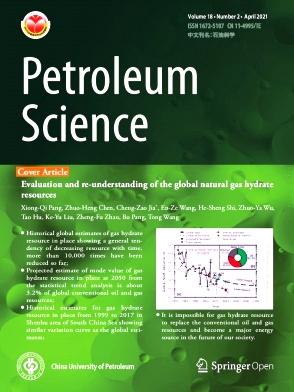华电油页岩自热热解原位转化过程中氧引发过程的表征
IF 6
1区 工程技术
Q2 ENERGY & FUELS
引用次数: 0
摘要
本文章由计算机程序翻译,如有差异,请以英文原文为准。

Characterization of oxygen initiation process in the autothermic pyrolysis in-situ conversion of Huadian oil shale
The oxygen initiation process, one of the key processes in the early stage of the autothermic pyrolysis in-situ conversion technology, has not been deeply investigated, which seriously limits its development. In this study, the reaction behaviors, kinetic parameters, heat and product release characteristics during the isothermal oxygen initiation process of Huadian oil shale in O2/N2 mixtures with different oxygen concentrations and initiation temperatures were investigated via TG/DSC-FTIR. The results show that the samples exhibit three different reaction behaviors during the initiation stage, consisting of two main parts, i.e., the oxidative weight-gain and the oxidative reaction phases. The former phase is mainly characterized by the oxygen addition reaction that produces oxidizing groups which increase the sample mass. And the latter stage consists of two main subreactions. The first subreaction involves the oxidative cracking and pyrolysis of oxidizing groups and kerogen to produce fuel deposits such as residual carbon, while the second subreaction focuses on the oxidation of the resulting fuels. Furthermore, increasing the oxygen concentration significantly promotes the above reactions, leading to an increase in the reaction intensity and reaction rate. Owing to the combined effect of oxygen concentration and residual organic matter content, the total heat release increases with the increasing initiation temperature and reaches its maximum at 330–370 °C. In addition, the preheating stage primarily produces hydrocarbon gases, while the initiation stage predominantly generates CO2. As the preheating temperature increases, the CO2 output intensifies, the required reaction time shortens, and the release becomes more concentrated. Based on these findings, a reaction mechanism for the oxygen initiation process of Huadian oil shale was proposed, and recommendations were provided for optimizing the construction process.
求助全文
通过发布文献求助,成功后即可免费获取论文全文。
去求助
来源期刊

Petroleum Science
地学-地球化学与地球物理
CiteScore
7.70
自引率
16.10%
发文量
311
审稿时长
63 days
期刊介绍:
Petroleum Science is the only English journal in China on petroleum science and technology that is intended for professionals engaged in petroleum science research and technical applications all over the world, as well as the managerial personnel of oil companies. It covers petroleum geology, petroleum geophysics, petroleum engineering, petrochemistry & chemical engineering, petroleum mechanics, and economic management. It aims to introduce the latest results in oil industry research in China, promote cooperation in petroleum science research between China and the rest of the world, and build a bridge for scientific communication between China and the world.
 求助内容:
求助内容: 应助结果提醒方式:
应助结果提醒方式:


